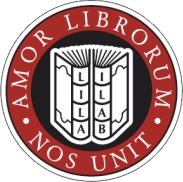Exhibitor BAS Books offers original advertising by E McKnight Kauffer
Posted on 22nd May 2019
E McKnight Kauffer (1890 – 1954) was one of the most talented and internationally admired graphic designers of the twentieth century. Born Edward Kauffer in Montana, USA, he began drawing with a passion in the family backyard in Evansville, Indiana at the age of five while other children played. By the age of 17 he was a scene-painter with a travelling rep company, met actor Frank Bacon who invited him to California, and so began his life-long passion for books under the tutelage of San Francisco bookdealer, Paul Elder.
A regular customer of Elder Books, Joseph E McKnight recognised Kauffer’s talent and offered to fund a period studying art in Paris. En route, Kauffer saw the highly controversial Armory Show in Chicago which exposed him to major experimental work from artists such as Duchamp, and in Munich he would have found work by poster designer Ludwig Hohlwein who would influence him so greatly. Arriving in Paris, E McKnight Kauffer as he was now known – having adopted his benefactor’s name – was only able to stay just eight or nine months before fleeing Paris for London with his new wife as war broke out.
After a period of dishwashing to earn a living, Kauffer was commissioned in 1915 by the great Frank Pick of London Underground Electric Railways to create advertising posters. The company was to be Kauffer's main client for the next quarter of a century. Soon Kauffer gave up painting and by the early 1920s he was heavily involved in book design, as well as advertising work.
Revolutionary Flag Bearer (1925) is an original artwork offered at Firsts London by BAS Books (Stand J02). It was produced as a showcard advertisement for Charles Eneu Johnson & Co Printing Inks of Philadelphia, a company dating back to 1804, and one of the first manufacturers of quality ink in America. Charles Johnson’s firm was founded and based in Philadelphia, the headquarters of the colonial forces at the time of the American Revolutionary War, and the city in which the Declaration of Independence was signed. In this commission, Kauffer designed five advertising showcards for the company, each on a patriotic theme.
The other four original advertising designs by Kauffer are held in the Prints & Drawings Collection at the V&A in South Kensington {viz. E.1-4 -1957. Level C, case GG, shelf 150, box A}. They were gifted to the Museum in 1957 by Mr E C Gregory. Eric Craven (Peter) Gregory was a very generous benefactor to British public art collections, and from 1930 had been Joint Managing Director, and then Chairman, at Lund Humphries publishers in London.
Gregory was a great personal supporter and admirer of Kauffer’s work, appointing him the company’s first Director of Design. Kauffer shared a studio and darkroom with Man Ray in Lund Humphries' offices at 12 Bedford Square, Bloomsbury, where Man Ray exhibited for the first and only time in England in 1934.
On the back of the board of Revolutionary Flag Bearer is the original copyright label of The Imperial Arts League, signed in ink by EMcKK. A further stamp on the back stating 'Designed by E. McKnight Kauffer, 26 Aug 1925' indicates that this image was the conclusive work in the sequence, as the other four are all dated July or early August.
Kauffer had tried to return to the States in 1921. He had been invited to show his early posters at New York’s Art & Decoration Gallery which gained a very favourable press. At the same time, with his wife and daughter back in England, he also attempted to find work for several months with American advertising agencies, but was only offered a few commissions to design theatre posters.
“America was not ready for him. So, he ‘experienced a great rebuff’, returned to England in the spring of 1922, where he continued to pile up honors.” - Frank Zachary in Portfolio #1 1949
The radical and modernist Art Deco purity of design of Revolutionary Flag Bearer is typical of Kauffer’s work at this time - minimalistically using just two colours, strong lettering and key shapes. He depicts the staunch uniformed Revolutionary soldier with sword and spurs (i.e. not a Minuteman) flourishing the American standard on an eagle-headed flagpole beneath the banner promoting printing inks. The new nation’s representative design is accurately recorded*. Cannon explosions are blossoming symmetrically in the background, with a pun on “standard” in the caption block beneath the soldier’s right foot. This original artwork is signed E. McKnight Kauffer in blue at the top right of the design.
*On 14th June 1777, the Continental Congress in Philadelphia - “Resolved, that the flag of the thirteen United States be thirteen stripes alternate red and white; that the union be thirteen stars, white in a blue field, representing a new constellation.”
Original artwork in gouache on board, signed E.McKnight Kauffer; tipped to archival matte, framed/glazed [12 ¼ x 9 ½ inches]. £20,000

